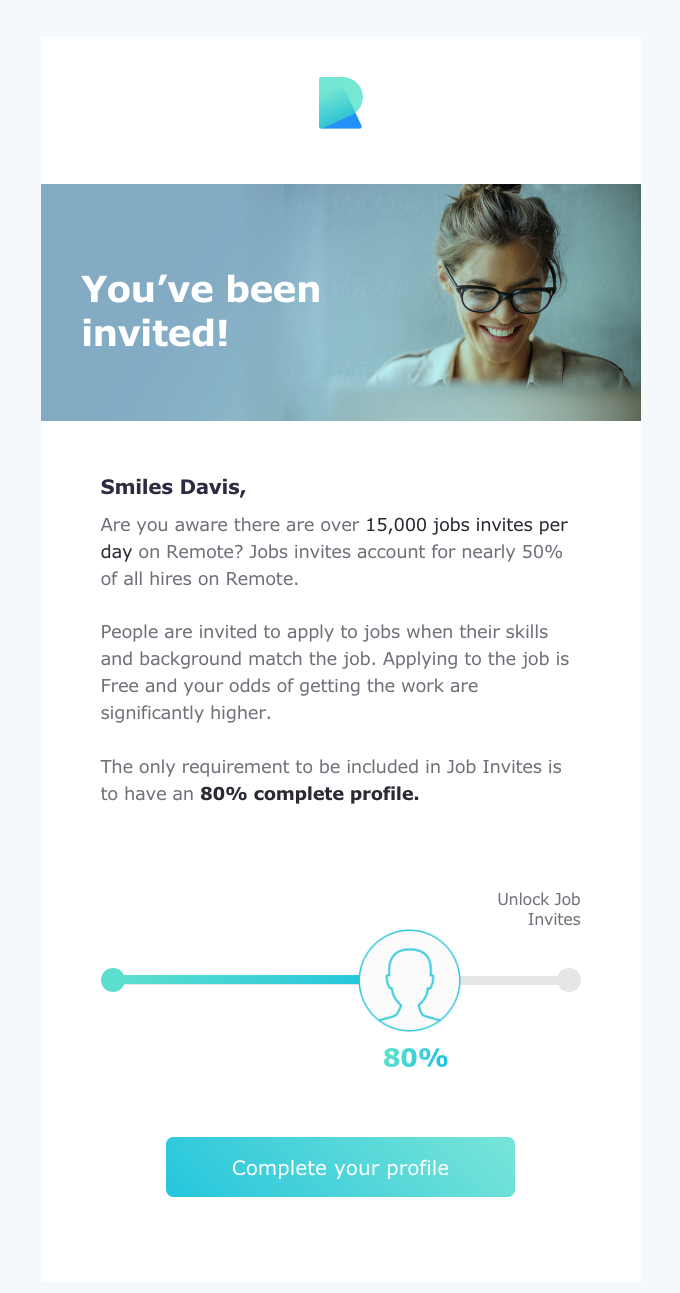Email Preference Center Tips: How to Keep Every Subscriber Happy
Email preference centers can unlock a wealth of subscriber information if executed properly. And while it’s unlikely subscribers will continually keep their profile up-to-date on their own, taking extra care to make your email preference center easy to find, and easy to use, could help you learn more about them to create the personalized email experiences that build loyalty and trust.
As traditional tracking tools like open rates and third-party cookies lose their clout and audiences become weary of the personal data they share with brands, email preference centers serve multiple benefits. Not only can they help you build first-party data, but you can also use that information to create authentic, tailored emails that boost engagement—and ROI.
We will walk you through the importance of email preference centers and how to use the data to improve your email strategy.
Why do people unsubscribe anyway?
Knowing why people unsubscribe is important for figuring out how you can keep them with an email preference center. The main reasons why someone might unsubscribe are:
- Too many emails
- Irrelevant content
- Situation changed
- Leaving for a competitor
About 51% of people unsubscribe because they receive emails too often. Often, the content or lack of personalization within these high-frequency emails drives them to leave. When people complain about getting too many emails, they’re really complaining about too many irrelevant emails. With so much competition between brands in the inbox, subscribers cut back on their email subscriptions when they’re not getting what they want.
Subscribers might also unsubscribe because their situation, needs, or interests changed. Perhaps these changing circumstances are important to consider for empathizing with your audience and even growing your product or service line to fit the evolving needs of your subscribers. If your subscribers are especially frustrated with your emails, they may go straight to marking you as spam instead; this hurts your overall email deliverability.
You can help prevent unsubscribes and spam complaints with a thoughtful preference center that addresses your specific audience and accommodates their needs, to keep them engaged longer.
What is an email preference center?
An email preference center is a page that gives your subscribers a choice in the emails they get from you (such as content or frequency) in addition to the option of unsubscribing. This way, subscribers can opt-down instead of completely opting-out. Email preference centers are not the same as unsubscribe pages which confirm an opt-out, ask for feedback and typically prompt people to re-subscribe.
Email preference centers don’t have to be complicated, and they’re worth the time and effort to create to build more first-party data and brand loyalty.
The benefits of email preference centers
Email preference centers are advantageous for being more efficient and effective with your email marketing strategy. Here are a few reasons why they are so impactful.
Increase engagement and inbox placement
The level of personalization that email preference centers provide can lead to increased email engagement and other improvements. And according to our 2021 State of Email report, personalization is top of mind for marketers. In fact, 9 out of 10 marketers believe personalization is imperative to overall business strategy.
This demand for relevant content could lead to subscribers that look forward to receiving–and even sharing–your emails. While the level of sophistication may vary, taking the extra step to personalize based on subscriber preferences goes a long way to increase engagement and retention.
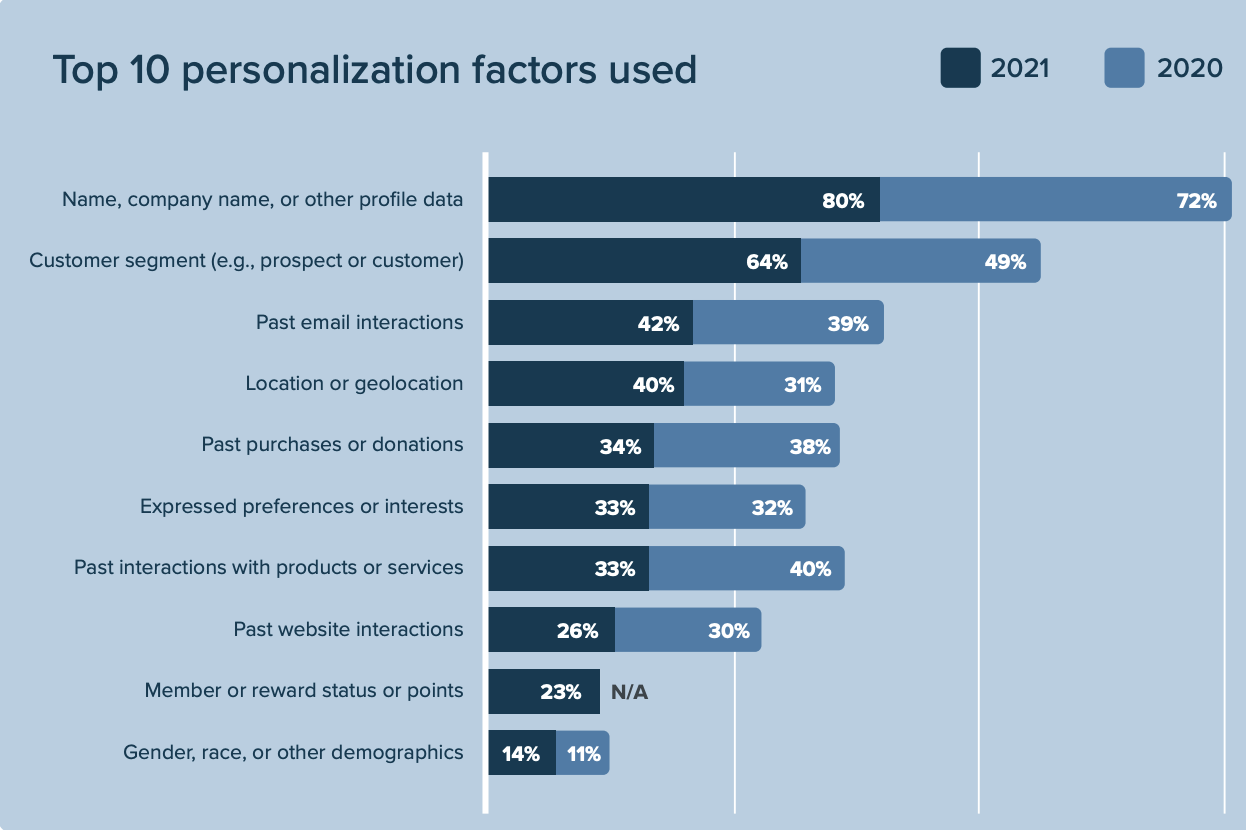
Learn more about your best audience
Our latest State of Email report also confirmed that email return on investment (ROI) continues to stay strong: $36 for every $1 spent, which is more than any other marketing channel! This makes email subscribers your best audience, and an email preference center helps you learn more about them. If you can figure out what makes them tick (and click!), you can attract more people like them. And that’s great for business.
Get ahead of privacy and anti-spam laws
Laws around the world are becoming more strict when it comes to protecting people’s data and privacy. Even if you only do business in the U.S. with a law as lenient as CAN-SPAM, many states are taking the lead in providing stronger protections like the California Consumer Privacy Act (CCPA). Even the tech giant Google plans to end support for third-party cookies as part of their Privacy Sandbox initiative.
Many companies prioritizing first-party data to maintain and grow their subscriber base. Consent and transparency in data collection through the preference center helps reiterate the value exchange for information. Subscribers can clearly see what their information will be used for—and why sharing will only improve their brand experience.
The good news? 83% of consumers are willing to share their data in exchange for a more personalized experience. 77% would trust businesses more if there’s an explanation on how that personal information improves their experience.
What are the different preferences you can offer?
Whether you want to create a new email preference center or optimize an existing one, you need to think through the actual preferences you want to collect first. Here are some ideas to get you started. (Hint: You can use more than one!)
Email lists or content
The most basic choices you can offer subscribers in a preference center are the different email lists you have. These should cover the different types of content you send such as newsletters, events, product updates, or deals & discounts. (This setup is the most common among brands).
This is our Litmus preference center:
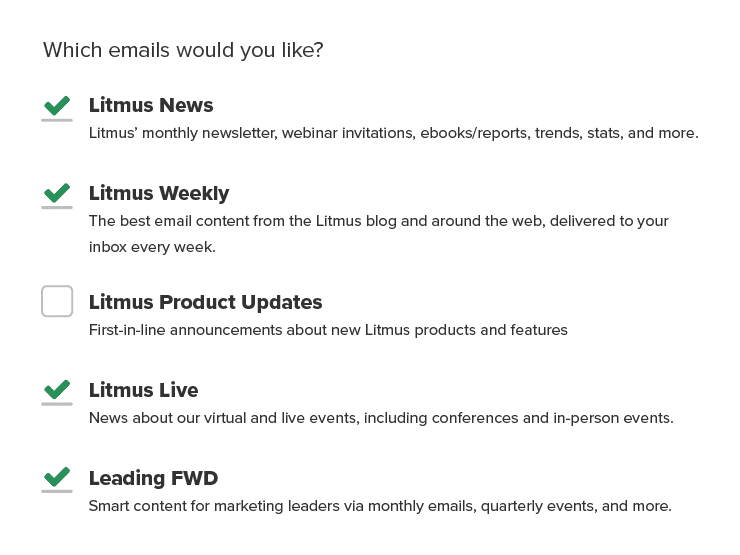
Interests or topics
If you want to get more specific with content personalization but don’t have the right behavioral data, capturing your subscribers’ explicit interests is the way to go. This gives you the flexibility to use dynamic content or smart segmentation in any of your emails. For example, instead of sending the same newsletter to every subscriber, you can send different versions based on interests, location, or time of day. You can even use your preference center to capture interest for special occasions, like giving your subscribers the option to opt-out of Mother’s Day emails.
adidas’ preference center focuses on their subscribers’ interests. And they do it in a fun and interactive way!
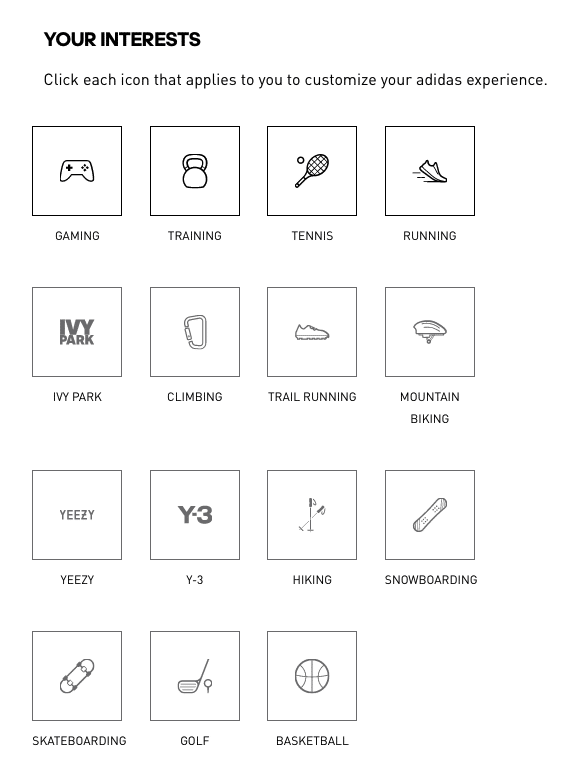
And Primary’s preference center includes choices to opt-out of Halloween or holiday-related emails.
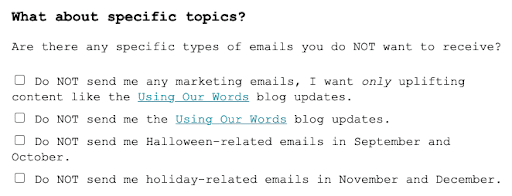
Timing
Controlling your email frequency (how often you send) or timing (the time and day you send) is another great way to give subscribers choices, especially if your brand sends a high volume of emails.
You can give options such as:
- Daily, weekly, or monthly
- Mondays, Tuesdays, or evenings
- Pause or snooze for a set amount of time
However if you give these options, you must be able to accommodate them and do so at scale.
Here’s a snapshot of how Zulily incorporates some timing options into their email preference center:

And this example from MarketingProfs shows how you can use specific days as preferences:
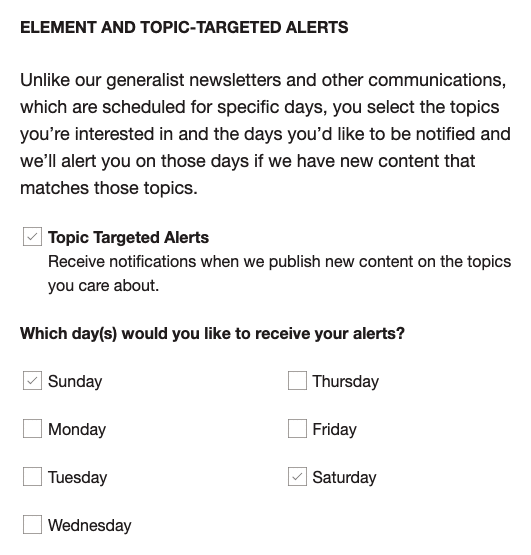
Multi-channel
Your preference center isn’t limited to just emails. And asking subscribers to choose how they want to hear from your brand only creates more opportunities to maximize your reach and increase engagement. Alternatives to email that you can offer are short message service (SMS)/texts, mobile push notification, or direct mail—depending on your content. For example, your audience can subscribe to flash sales via email, SMS/text message, or both.
Spotify gives its customers the option to receive updates via email and/or push notifications. Simple and gets the job done.

Profile information
Preference centers are a helpful way to collect your subscribers’ profile information such as:
- First and last names
- Job title
- Location
- Gender
- Birthday
- Shoe size
This kind of data gives you even more ways to personalize your subscribers’ experience. You can use someone’s birthday to send them a celebratory email or use someone’s shoe size to highlight the shoes available in that size. Pretty powerful, huh?
Part of Sephora’s email preference center asks for your country and zip code. They are transparent on how they plan to use that information, motivating subscribers to share more.
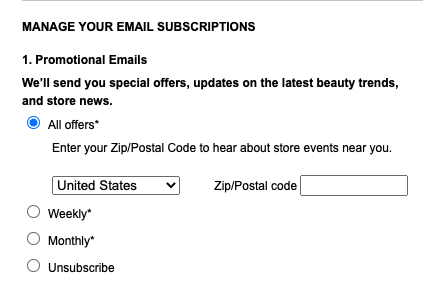
How to create an effective preference center
Once you’ve figured out what information you want to obtain from your preference center, it’s time to think about presentation and organization. While there are always exceptions, here are some general best practices you should consider.
1. Give a universal unsubscribe option
If you’re going to replace your emails’ unsubscribe link with your preference center, you have to provide a way for people to unsubscribe from all of your emails. This helps you stay compliant with laws such as CAN-SPAM from the U.S., Canada’s CASL, the EU’s and UK’s GDPR, and others around the world—now, and in the future.
Even if you have a separate unsubscribe link in your email, it’s a good idea to have an unsubscribe option in your preference center. Be sure to make it easy for people to unsubscribe from your preference center page.
This is how we do ours:
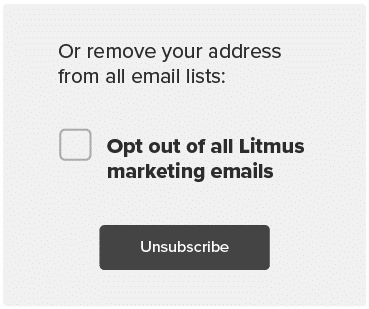
2. Only offer what you can deliver
When subscribers sign up for specific email preferences, they except to receive them. Not doing so can erode brand trust, beyond just what is (or isn’t) in their inbox. Only ask for details you need or can use to keep your data clean and usable.
3. Don’t overwhelm subscribers
Make sure you only offer emails you can realistically deliver. Don’t overwhelm subscribers with too many options which could increase the risk of delivering irrelevant messages.
Here’s an example of what not to do.

Consolidate where you can and prioritize what details will enhance the subscriber’s experience with your brand.
4. Keep everything on one page
You may have heard the saying, “Keep it simple,” and that rings true here, too. Your email preference center should only be one page. An extra click or too many fields can be a barrier. And if you feel like you need an extra page for all of your fields and options, consider narrowing them down instead.
5. Ditch the default and be on-brand
Using your email platform’s default preference center is usually better than nothing. But if you can brand it? Even better for the subscriber experience. By customizing your email preference center to your brand guidelines, you increase trust and credibility. Otherwise, this could raise questions on the legitimacy of your page. Even if your subscribers leave, you should always ensure a great brand experience.
6. Make it mobile-friendly
About 40% of email opens are on a mobile device, according to our latest State of Email Engagement report. This is more than desktop, apps, or webmail clients. It’s essential to make sure your email preference center is optimized for mobile. A broken mobile experience on your page is frustrating and can lead to people choosing not to subscribe.
7. Pre-populate information for convenience
Auto-filling known information for your subscriber streamlines the process and improves the experience. Removing unnecessary friction only benefits the likelihood that you will learn more about your audience.
8. Don’t force people to sign-up or log-in
Don’t force people to sign-up or log-in to manage their preferences unless it’s a security issue. It creates a poor subscriber and brand experience.
How to get people to actually use your preference center
Here are a few ways to promote your preference center—and why people should use it.
Make it standard in your email footer
Put your email preference center in the footer of every email you send. Many brands use hyperlinked text such as “Email Preference Center” or “Manage Preferences.”
This is what our email footer at Litmus looks like:
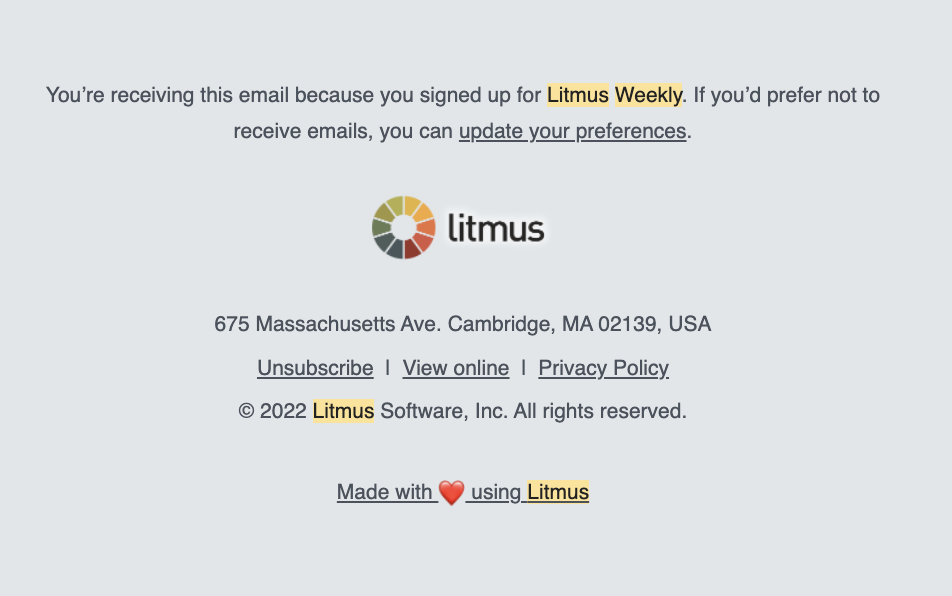
Our “update your preferences” and “unsubscribe” links both go to our email preference center. Only do this if your preference center is compliant with opt-out regulations. Otherwise, your unsubscribe link should go to a separate unsubscribe page. Make your copy easy to read and understand for simplicity.
Put it in your welcome email
You just got a new email subscriber. Welcoming your new subscribers with their preferences is a great way to start your relationship. This first impression creates trust because it lets your subscribers know you care about their needs. It tells them what emails they can expect and gives them the control to customize. And they’re more likely to remember in the future that this is an alternative to unsubscribing.
This welcome email from Casper tells their audience the kinds of content they can look forward to as a new subscriber.
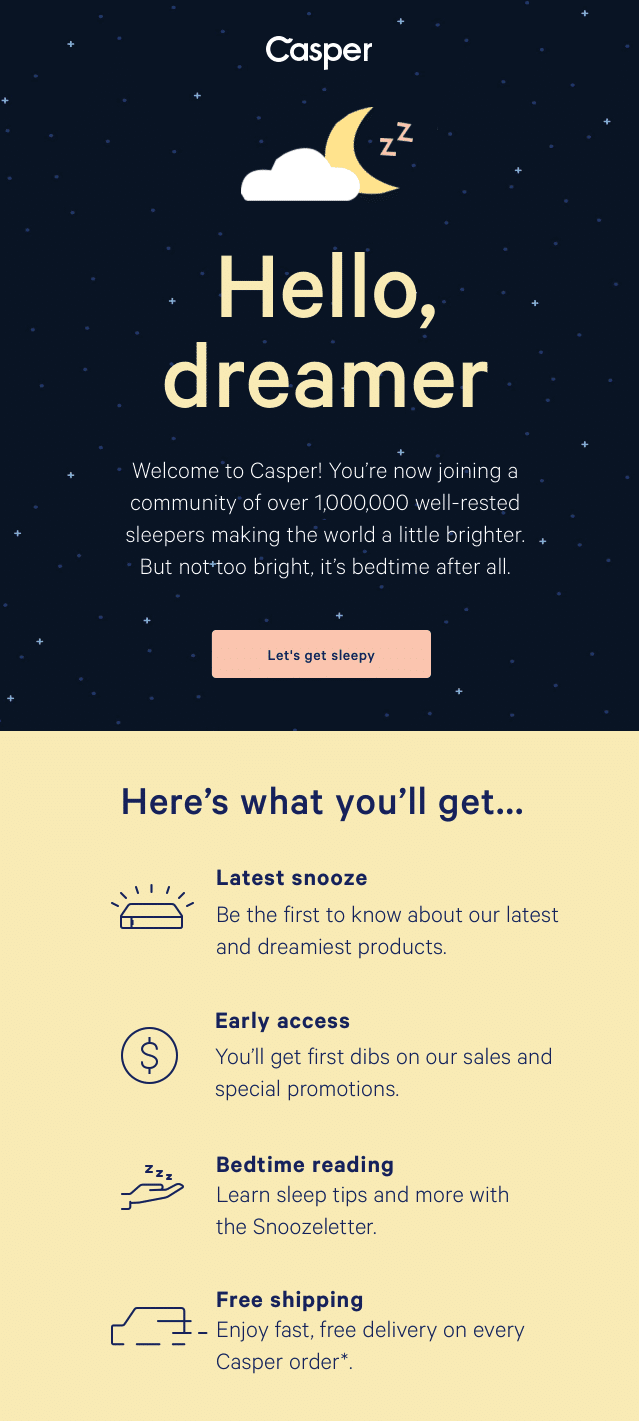
Source: Really Good Emails
In Protein’s welcome email, they tell their subscribers what to expect and how to further customize notifications.

Send an email to promote your preference center
You can also send a dedicated email to promote your preference center or have it as a prominent content block within your emails. This is a great way to let your existing subscribers know that they have choices. You can even incentivize your subscribers to participate.
This email from Remote lets subscribers know the benefits of completing their profile.
Source: Really Good Emails
Bespoke Post has an entire email all about preferences, which enables them to customize their audience’s products and email content.
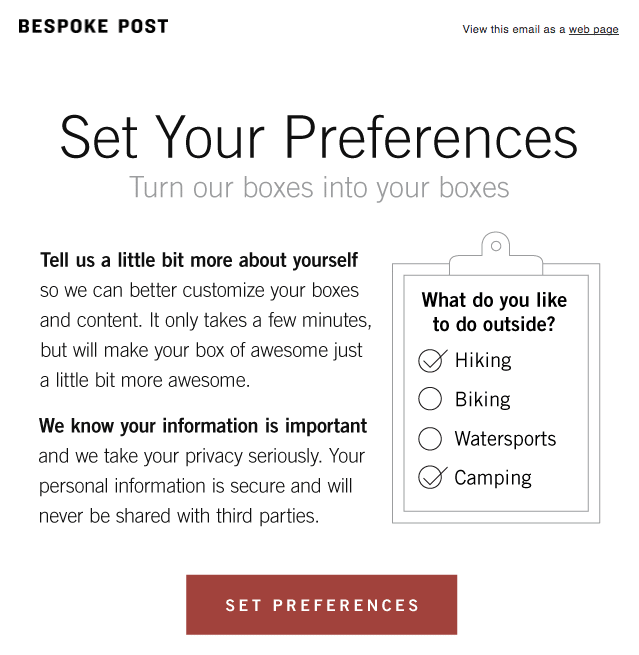
Ask for information gradually
Progressive profiling allows you to ask for information one piece at a time. By asking for a different detail over several correspondences, the process feels less overwhelming. It also creates more brand trust as they become more familiar with your products and services.
In Rapha’s welcome email, they only ask for one thing so they can ensure their subscribers hear about the type of clothing that suits them.
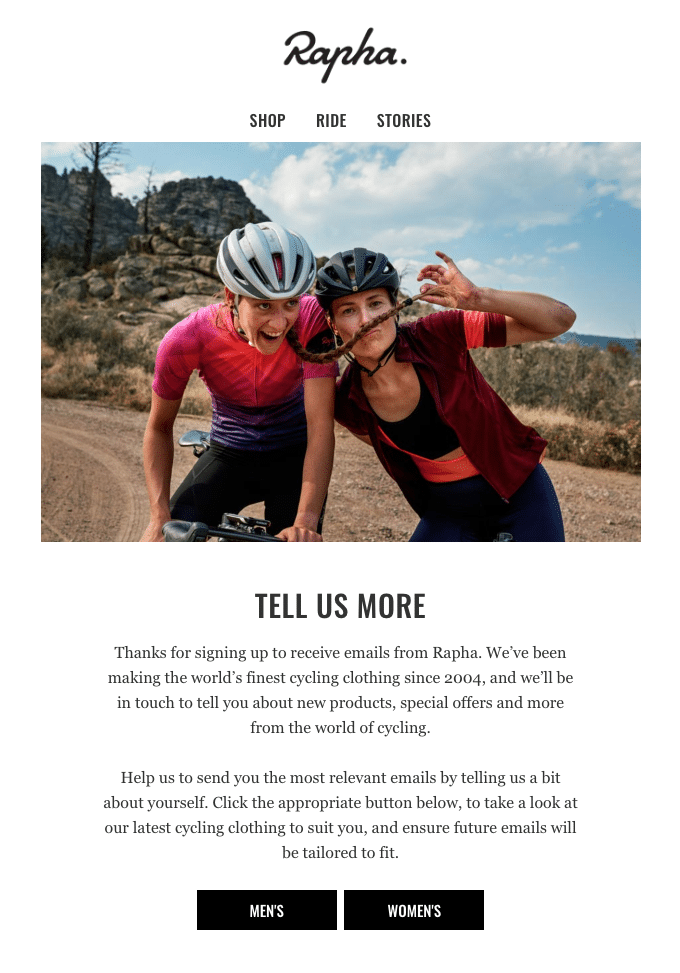
Source: Really Good Emails
Kendra Scott sends an email only asking for a birthdate with details on how the subscriber will benefit.
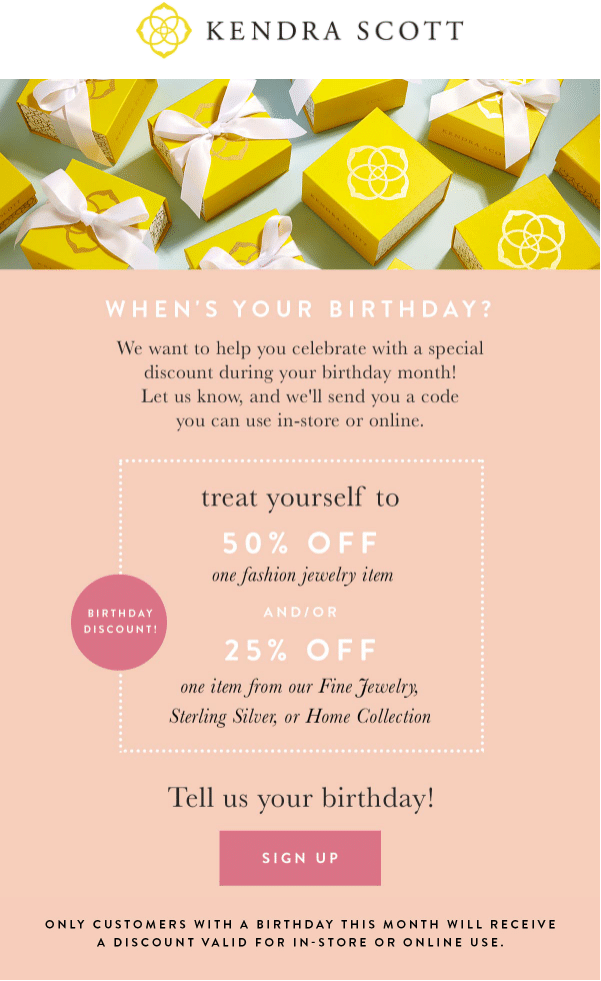
Include it in your re-engagement campaign
Inactive subscribers who ignore your emails but stay on your list drag down email performance. Before you let them go, send a re-engagement campaign—and let them know they can get emails they want. This nudge can push inactive subscribers to possibly engage again.
Animoto gets straight to the point in their email by telling their unengaged subscribers how they can get interesting and relevant content.
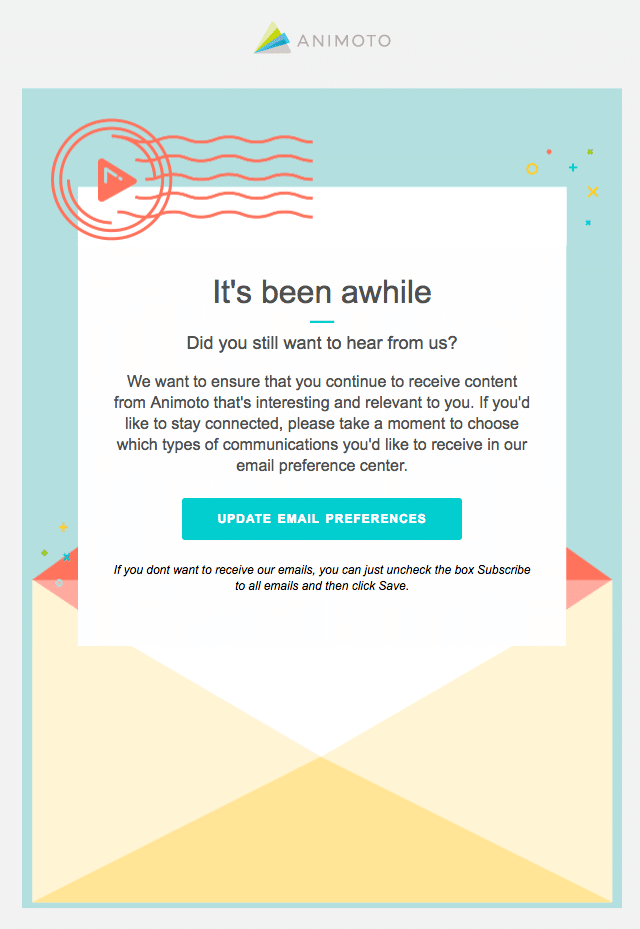
Source: Really Good Emails
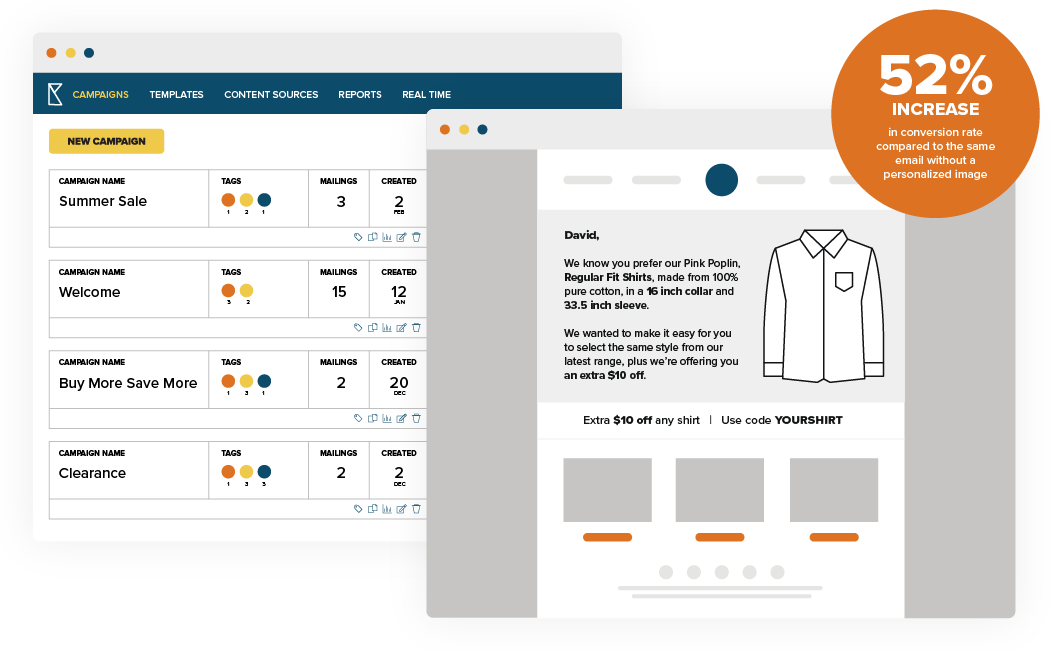
| Create individualized email experiences at scale Get powerful results with uniquely personalized, engaging email experiences that boost customer loyalty and drive revenue with Litmus Personalize, powered by Kickdynamic. |

Maria Coleman
Maria Coleman was a Senior Content Marketing Manager at Litmus
